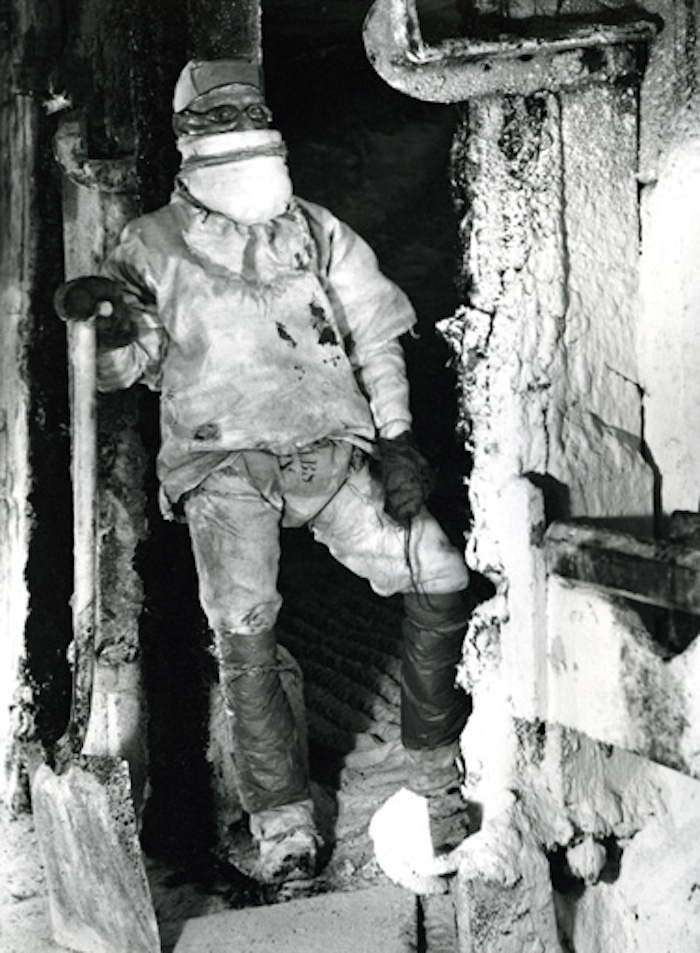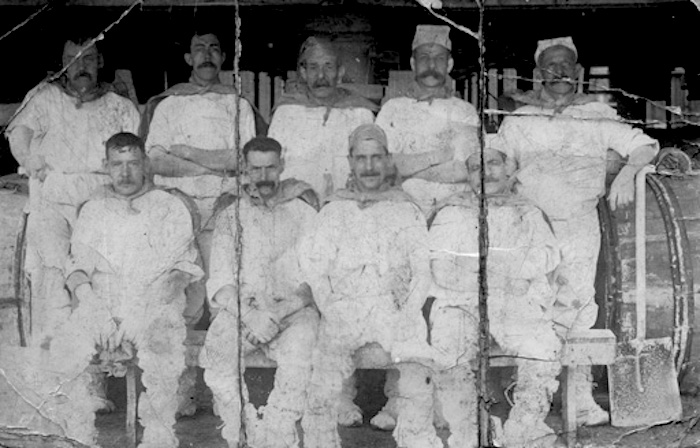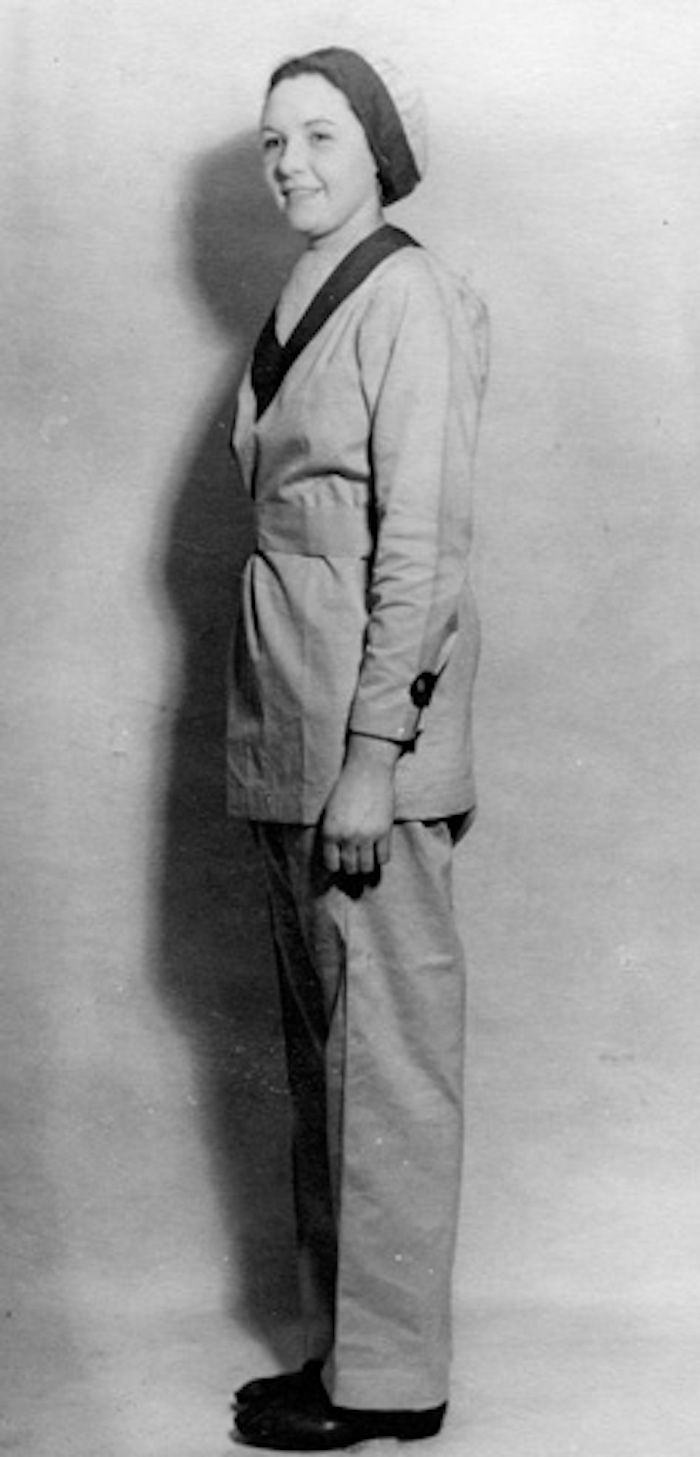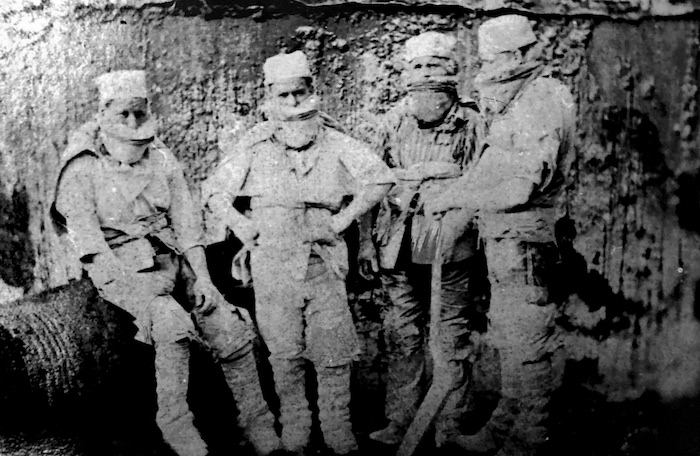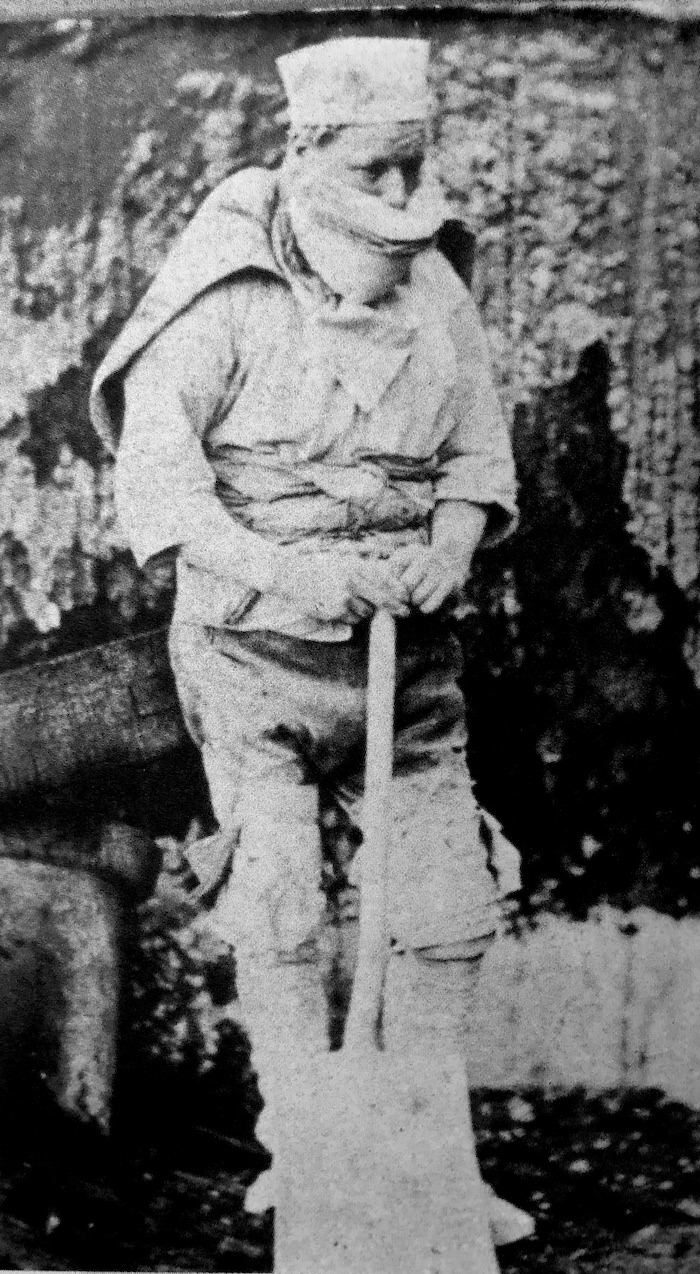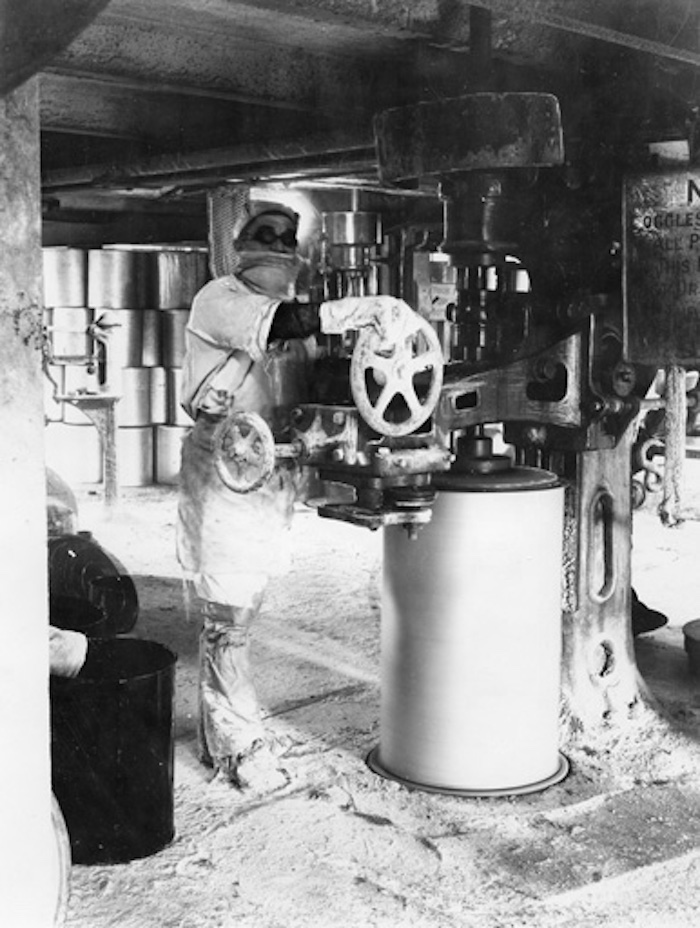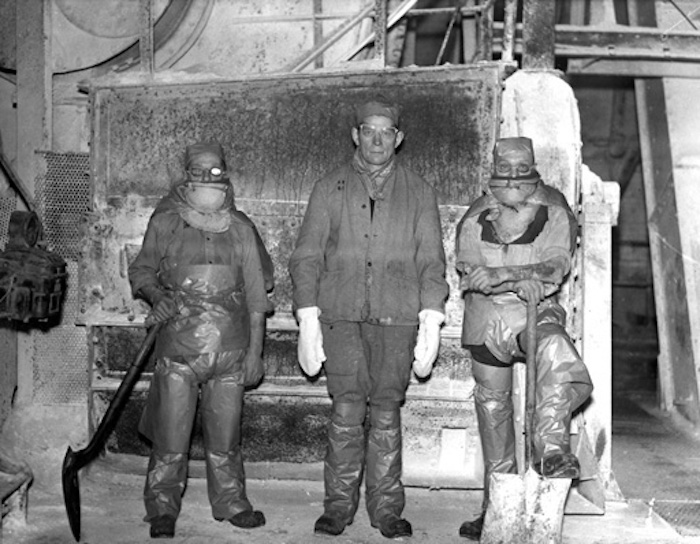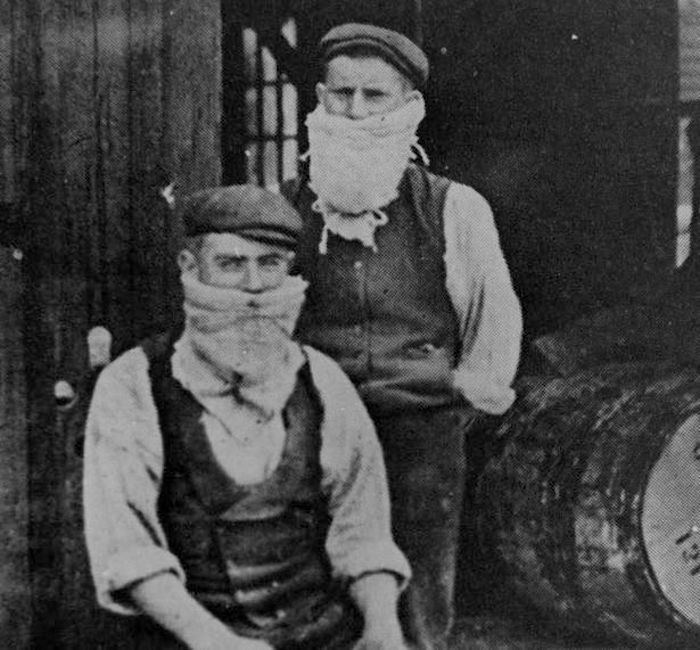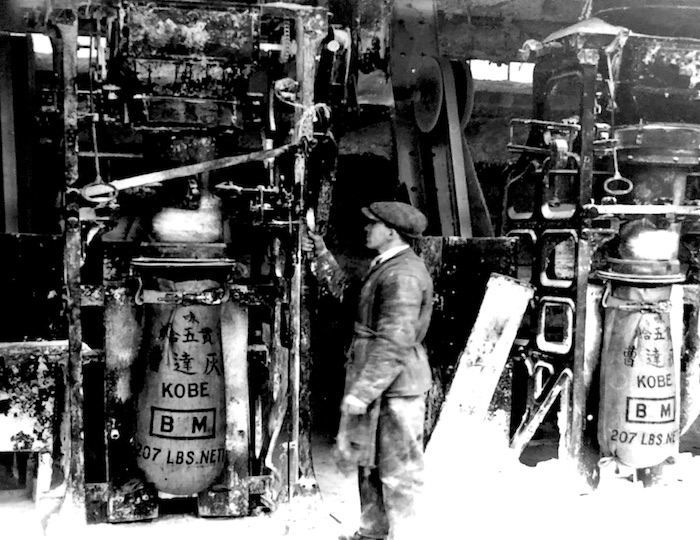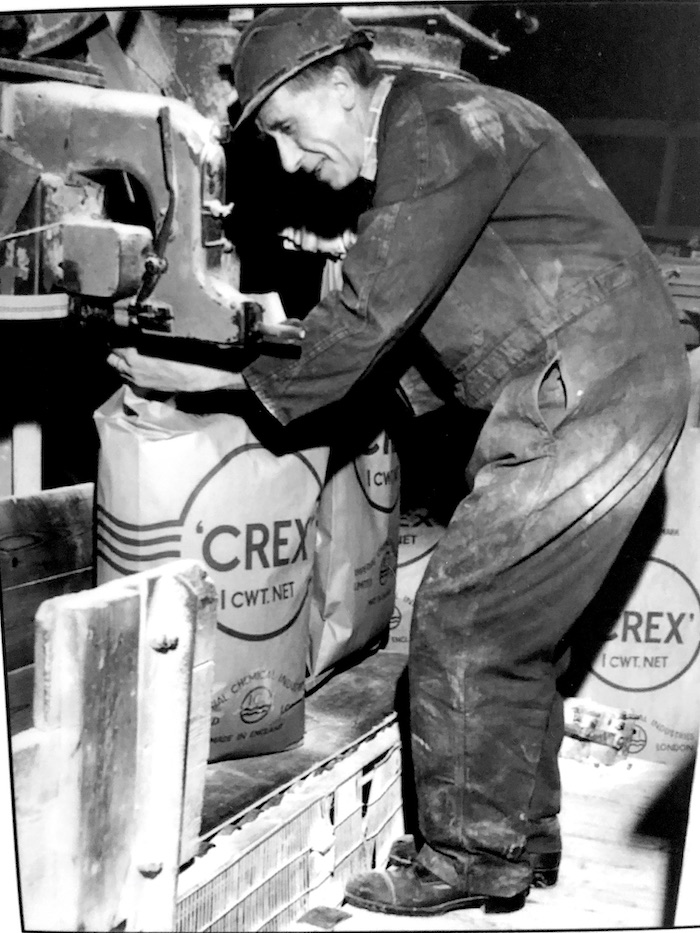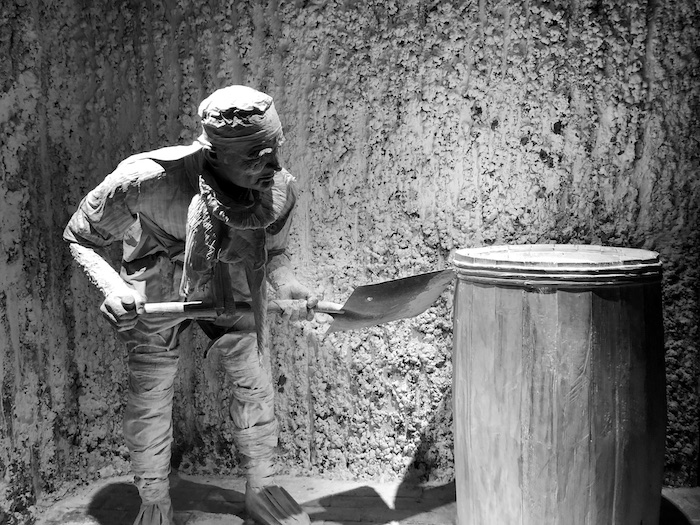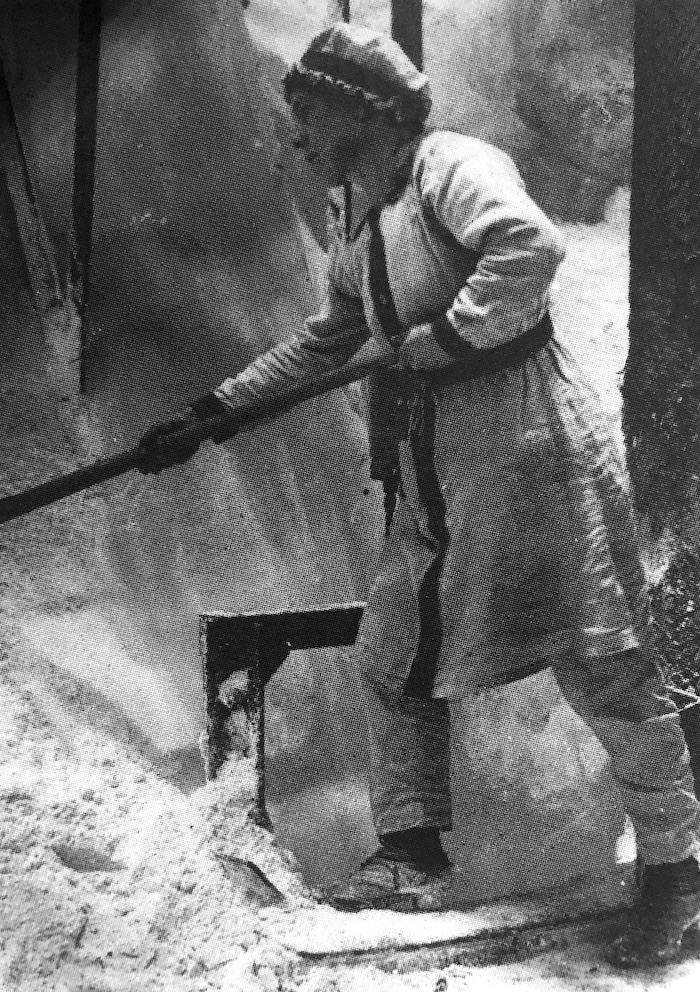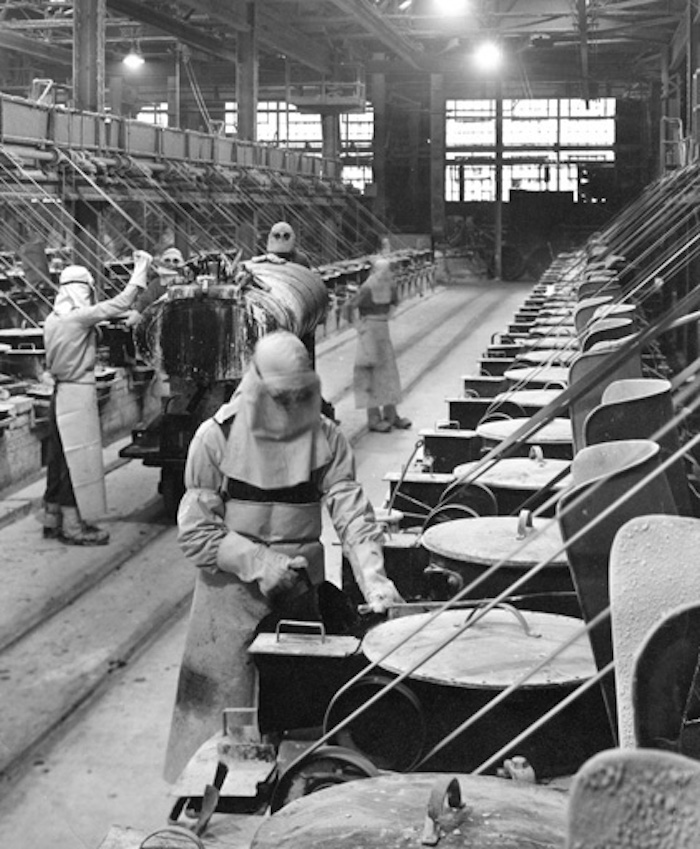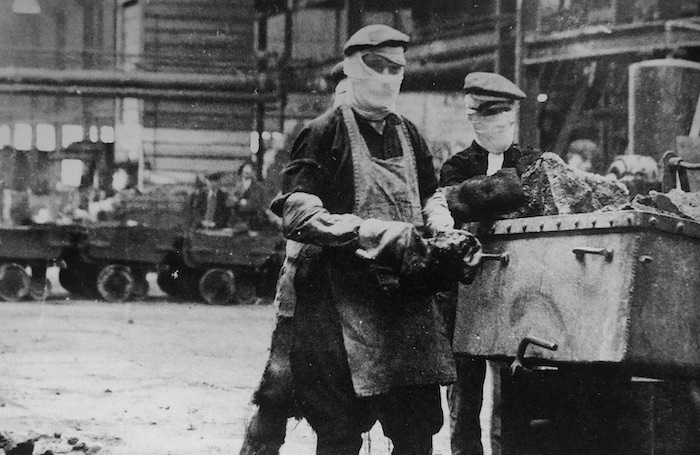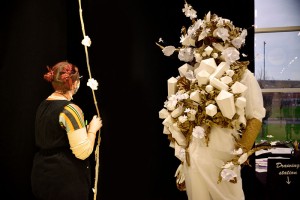Below are images of Bleach Packers and related trades.
Laurence Payot has been appointed by Halton Borough Council to create an ambitious artwork inspired by Halton chemical industry, and working with young people from the borough. Following a series of workshops in October/November 2021, the work will consist of large scale public projections, reinventing the stories of the Halton Bleach Packers and other trades of the chemical industry. More information and behind the scenes available here.
More information about Halton’s heritage can be found at Catalyst and on the Halton Heritage Partnership website
In what we call the powder-room the lime for the bleach powder is first laid down on the floor of a chamber about five inches thick. The doors are then sealed up and chlorine gas is put into the room, and it is left sealed until such time as the lime absorbs the chlorine; then the men, wearing muzzles, go into the chambers and they put what they call the bleaching powder down through shoots. There are casks underneath to receive the beaching powder; then underneath all those chambers, it is an open space. The powder-packing chamber is enclosed, and there is a very slight draught. Sometimes men will have to go in with muzzles and run out a few moments, or run out in half an hour, some of them drop down. If they inhale through their nostrils at all, it has a very bad effect, they become gassed, and sometimes have to lie up for two or three days. Then they receive no pay.
The sensation they complain of is in the throat – a choking sensation, as if they were asphyxiated. They must inhale through all these rolls of flannel and exhale through the nostrils. But in addition to this muzzle through which they must breathe, they must wear goggles over their eyes; and then, and portion of the skin that is exposed, they put tallow or grease on, and most of these men cannot eat any food until they take a stimulant, whiskey or rum.
In some factories, the men averaged 84 hours a week. 56 hours one week and 112 in another, or 186 a fortnight.
The man begins his fortnight’s round on the Monday morning; he works, on the Monday, 9 hours; on the Tuesday, 10 hours; on the Wednesday, 10 hours; on the Thursday, 10 hours; on the Friday, 10 hours; and on the Saturday 7 hours; a total of 56 hours per day-week. Then comes the night week – which follows the above. He works on the Monday, 24 hours; on the Tuesday, 14 hours; on the Wednesday, 14 hours; on the Thursday, 14 hours; on the Friday, 14 hours; on the Saturday, 13 hours; on the Sunday, 19 hours.
The cemetery where the workers are buried are at Appleton and Wiston, and it is amongst the men a standing pleasantry to say that if these men were dug up they would supply the raw material for a chemical yard. “you could get tons of alkalis out of their bones and vats of acid. The laugh goes around. But Roger is their best joke, as Roger is their worst enemy. Roger is a green gaz, and so poisonous that the men who pack the bleaching powder into the barrels, work with goggles on their eyes and twenty thicknesses of flannels over their mouths. They can pack but a few minutes at a time. A ‘feed’ of this gas kills a man in an hour.
The Saltcake men were the roughest men in the works. A Saltcake man could be recognised by his toothless mouth. The salkcake department was characterised by heaps of bread crusts, which the men could not eat.
The elite of the works were the bleaching powder men, the bleach packers and lime dressers. >The lime dressers dressed the lime on the floor or on shelves, an operation which was not dangerous but merely unpleasant; his hands and arms were smeared with grease, his trouser-legs wrapped with sheets of brown paper, and theoretically his face protected by mask and goggles.
The Bleach packer raked out the chlorinated lime into casks. He was similarly protected, for he had the additional hazard of chlorine gaz to content with.
Inside the factories, the main arm is done by the vapours:
For instance the vapour of sulphuretted hydrogen produces severe diarrhoea, rapid pulse and symptoms of low or thyroid fever.
Chlorine produces suffocation, cough, and laboured beathing.
Vapour of nitric acid will produce disease of membranes linings the mouth, nose and throat.
The work is so detrimental to clothing that many of the men wear suits of paper – some of them having new ones everyday.”
Taking a stroll through Widnes, what most strikes the visitor as peculiar is the complexion of the workers amongst the chemicals. It is a kind of leaden paleness, and around the eyes the majority have a lack lustre appearance. Yet muscularly the men seem strong, and move with anything but the lagging uncertain steps one would expect from their faces.
In what we call the powder-room the lime for the bleach powder is first laid down on the floor of a chamber about five inches thick. The doors are then sealed up and chlorine gas is put into the room, and it is left sealed until such time as the lime absorbs the chlorine; then the men, wearing muzzles, go into the chambers and they put what they call the bleaching powder down through shoots. There are casks underneath to receive the beaching powder; then underneath all those chambers, it is an open space. The powder-packing chamber is enclosed, and there is a very slight draught. Sometimes men will have to go in with muzzles and run out a few moments, or run out in half an hour, some of them drop down. If they inhale through their nostrils at all, it has a very bad effect, they become gassed, and sometimes have to lie up for two or three days. Then they receive no pay.
The sensation they complain of is in the throat – a choking sensation, as if they were asphyxiated. They must inhale through all these rolls of flannel and exhale through the nostrils. But in addition to this muzzle through which they must breathe, they must wear goggles over their eyes; and then, and portion of the skin that is exposed, they put tallow or grease on, and most of these men cannot eat any food until they take a stimulant, whiskey or rum.
Salk-cake Man: I am standing height hours in front of a fiercy furnace, melting with heat. The heat is so intense I am perspiring all the time> I have two towels to wipe myself on. One is drying whilst I am using the other. I am not often hungry, and the gas makes me sick.
Living for weeks on end on nothing but milk and eggs, as my stomack wonlt stand anything solid.
Packing bleaching powder was a particularly nasty job. It involved bleach packers working in lead lined chambers shovelling chlorinated lime into casks. As protection against the hazards of the powder, bleach packers wore improvised muzzles of 20 to 30 layers of flannel and rapped their limbs in cloth or brown paper. Even so they were often overcome by the fumes from the powder. After working hours the bleach packers retreated to their favourite public house, where, note to give offence to other customers in their bizarre working clothes, they drank apart in the ‘packers’huts’.
Jobs:
vitriol burners
finishers
chlorine stillmen
saltcake men
revolver men
lime dressers
bleach packers
“surely a man cannot work continuously for a week” – “ It is wonderful what men will do when they are put to it. I am astounded myself at what the chemical workers are able to do under the conditions under which they have to labour.”

